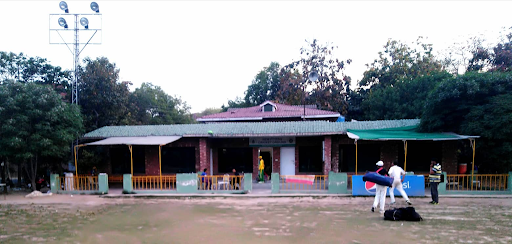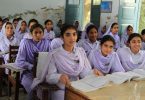By Edward McLeish and Sam Richards with the assistance of Anns Zaffar and Shahbaz Muhammad
Professional cricketers in Pakistan are using tournaments to re-engage with the western world and rebrand the country’s complicated reputation.
The Australian cricket team was given the opportunity to follow Sri Lanka, the West Indies, and Zimbabwe to tour in Pakistan in March, but it’s unsafe reputation made Australia decide to play in the UAE instead.
Sri Lanka’s return to Pakistan is particularly significant, given the deadly bus attack in Lahore in 2009, where 12 gunmen killed 8 people and injured 6 Sri Lankan cricketers.
Australian ODI captain Aaron Finch and Pakistani-born Australian cricketer Usman Khawaja recently told Australian newspaper, The Age, they are open to returning to Pakistan, as long as it is safe for players.
“Obviously, whatever Cricket Australia tells us, that’ll be the big thing,” Khawaja said.
Cricket is at the forefront of Pakistan’s socio-political agenda, and former captain of Pakistan Imran Khan acknowledges hostility in the country.
“Without cricket, extremism in Pakistan will grow,” Khan told Cricinfo.
Although Cricket Australia has not toured Pakistan since 1998, new domestic T20 competition, the Pakistani Super League (PSL), has seen international stars such as Shane Watson recruited.
International Cricket Council chief executive David Richardson attended the PSL final in Karachi and said foreign players returning to the country is a representation of improved security in Pakistan.
“You should appreciate the work done by Pakistan as a country and the Pakistan security forces because the perception outside of Pakistan was that it was quite a dangerous place to visit in the past. The perception slowly but surely has been changed through the good work that has been done here, not through any window dressing,” Mr Richardson said.
“Step-by-step, certainly Pakistan is on the right path.”
Although safety is the most important measure in cleaning up external perceptions of Pakistani cricket, perceptions of integrity also need to be addressed.
Since 2000, seven Pakistani players have been banned for acts of corruption. That is the equal most of any country, tied with South Africa.
Former New Zealand and Pakistan coach Steve Rixon slammed the PCB’s professionalism as he departed Pakistan’s coaching ranks in September last year.
“They didn’t pay subsidiary staff on time. Everyone was meant to go to the World Cup, which would be the sensible thing to do but not unless they improved their act,” Rixon told Fairfax Media.
One way Pakistan could improve it’s image is through gender diversity.
But, before the PCB can properly focus on gender diversity, its priority is to reshape the country’s unsafe reputation through ethnic diversity.
Recently, the PCB has promoted the recruitments of international stars such as Australia’s Shane Watson in its PSL tournament to showcase diversity within Pakistani cricket.
“From the first game, it’s always been a great tournament to be a part of,” Watson told PSL’s YouTube channel.
The PCB hopes the continuation of star players contributing in its domestic competition will have a positive trickle-down effect to grassroots level on ethnic diversity, and while they are addressing gender diversity, there is still a long way to go.
A Pakistani sports analyst, Fazeela Saba, says gender diversity from a grassroots level up is struggling to gain traction, despite the establishment of PCB’s Women’s Wing in 2005.
“It’s high time for PCB to pay attention to the women [in] cricket before it’s too late. The more we read about ambiguities and vagueness of Pakistan women cricket team the more it boils down to the fact that women’s cricket is the least important entity in PCB’s priority list,” Miss Saba wrote on Scoreline in 2017.
“If PCB will not financially support the young players who have made tireless efforts to make it to the national team what hope will be left for them? They will start looking for other career options and the limited pool of women cricketers in Pakistan will shrink further.”
“We should have long term planning, strong domestic systems and financial support to achieve positive results.’’
Miss Saba’s concerns were outlined during a PCB meeting in December 2018, where the Women’s Wing outlined a five-year plan to improve women’s cricket from grassroots levels upwards through increased funding, facilities and development programs by 2022.
PCB Women’s Wing General Manager Shahid Aslam said this would be a new chapter in women’s cricket in Pakistan.
“I can assure you that in next couple of years, you will see big changes in women’s cricket,” Mr Aslam said.
“In accordance with our vision 2022, we are working on improving cricket at grassroots level such as club and school cricket in order to develop women’s cricketers in a better manner.”
“We want to introduce women’s cricket in over 250 schools. There is also special emphasis on ensuring that regional academies are also properly functional. It is important to ensure that PCB support staff, women’s wing and provincial governments all play role in promoting the women’s game in the country.”
While optimism rises for the future, concern still shadows the present. Few grassroot opportunities exist for women.
Ittefaq Cricket Club, head coach Nadeem Zaffar, says there are “no women” at his local cricket club and other than the Lahore National Cricket Academy (NCA), very few participation opportunities exist for women in the community.







